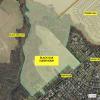Improving coordination with Delaware Department of Transportation is a key priority as Sussex County Council begins to implement its 2018 comprehensive land-use plan.
At its March 19 meeting, council got a crash course in how the county and state interact on land-use applications involving traffic and road improvement issues.
“This is a dialog to start better coordination for us on the transportation side and you on the land-use side,” said Drew Boyce, DelDOT's director of planning, during the one-hour presentation.
He made it clear that Sussex County officials have the final say on all land-use decisions. DelDOT's role is to inform the county on the impact of proposed projects including subdivision, conditional-use and rezoning applications, he said.
DelDOT provides several levels of analysis, most of which center around traffic impact studies paid for by developers, reviewed by DelDOT staff and presented to county officials during the land-use process.
Sussex County Director of Planning and Zoning Janelle Cornwell said no land-use applications requiring a traffic impact study can be approved until the study is finalized by DelDOT.
Among the proposed suggestions for improvement, Boyce said DelDOT is open to county officials getting more involved in the traffic impact study process.
Boyce said once a traffic study is completed, DelDOT staff and the developer meet to discuss the scope of road improvements.
“The county is currently not involved in the decision. However, DelDOT is open to the county adding their own requirements based on the traffic impact study,” Boyce said.
Steps to improve the process
Boyce said he's looking forward to more discussion with county council to address issues and perhaps take steps to update and streamline the process.
He said ideas to improve coordination include more information on applications earlier in the process; more defined plans for rezoning and conditional-use applications provided to DelDOT; requiring traffic impact study results earlier in the process; and having DelDOT staff available at planning and zoning and county council meetings to answer questions on key applications.
Sussex County Administrator Todd Lawson said he and staff would review comments made during the presentation and return to council in the near future with recommendations.
Traffic impact study a key
A traffic impact study, when warranted, is a key part of the process that provides information to DelDOT and county officials. It's also used to determine what road improvements developers are required to fund if a project is approved.
DelDOT requires an impact study for any development generating more than 50 peak hour trips or more than 500 daily trips from a proposed project – commercial or residential. The study must include all intersections where 50 peak hour trips from that development are generated. Boyce said a travel demand computer model is used to obtain that data.
The study assesses the impact on the transportation system from the proposed development, Boyce explained.
The study is completed by an engineering firm hired by a developer. Or, Boyce said, developers have the option to pay DelDOT staff to complete a study.
Engineers collect traffic count data in the area of the proposed development. Boyce said existing traffic counts less than one year old can be utilized. DelDOT also has the option to review older counts on a case-by-case basis based on recent development to determine their validity for use in a traffic study.
A traffic study may require up to six months to be completed and reviewed, he said.
Boyce said in eastern Sussex County, summer traffic counts are required, which can play a key factor in a developer's schedule.
Traffic counts for morning peak hours when school is in session are also required.
Councilman John Rieley asked whether a traffic impact study could make or break an application. “Could there be too much traffic?” he asked. DelDOT officials do not make a recommendation or decision. “That's up to you,” Boyce told council.
Assistant county attorney Vince Robertson said a study is neutral with no opinion attached to it. He said the purpose of the study is to provide officials with information .
Rieley also asked whether a road's condition is a factor. “We have to provide reasonable access even if a road is not performing well,” Boyce said.
In place of a traffic impact study, Boyce said, DelDOT allows some developers to contribute funds to an area-wide fee – $10 per trip – for DelDOT planning work, but the money can't be used for road improvements.
He said DelDOT must already have good data on the proposed impact of the development and the development must generate fewer than 200 peak hour trips and fewer than 2,000 daily trips before DelDOT will allow omitting a traffic impact study.
However, Boyce said, the fee does not absolve developers from doing road improvements to mitigate the impacts of the development.
Mitigation is part of study
Once a traffic impact study has been submitted, DelDOT staff determine the scope of required road improvements. Entrance improvements are dictated by DelDOT regulations. Developers are required to improve the road frontage of their projects including shoulders, multiuse paths, lane widths and possible turn lanes.
In addition, developers could be required to fund all or part of off-site roadwork depending on their development's impact on the surrounding road network.
Boyce said entrance and road frontage work is typically done early in the construction-site work phase with off-site work tied to the number of permits issued.
Boyce said financial contributions to existing or planned projects can also be made with funding earmarked to a specific project. An example would be several developers contributing funds to possible improvements at the Warrington Road-Old Landing Road intersection near Rehoboth Beach.
SARG: County can impact traffic
Rich Borrasso, Sussex Alliance for Responsible Growth spokesman, said the group's surveys show that traffic, congestion and perceived overbuilding are the overwhelming issues that concern eastern Sussex residents.
In a statement to council, SARG stated the following:
“For 50 years, past Sussex County councils have told residents there is nothing they can do about roads and traffic, DelDOT is responsible. This is simply not true. DelDOT does not generate traffic, development does, and Sussex County is responsible for approving traffic-generating development.
“This misleading statement is repeated despite the fact that Delaware law is unequivocal that all land-use decisions, from zoning to road levels of service, are the sole responsibility of the local governing body. The final say as to what levels of service and the approval of what development may take place and what traffic may be funneled onto roads in the unincorporated areas of the county belongs solely to the county council. But Sussex County decided decades ago to deflect responsibility for what has happened over the last 50 years.”
“It is now time for the county and DelDOT to change their approach regarding new development by implementing a new, binding development memorandum of agreement (MOA). It must be a clear, unambiguous and enforceable agreement that will direct and regulate how new development and its transportation impacts will be managed.”














































